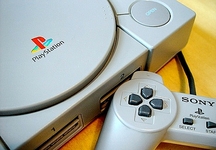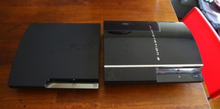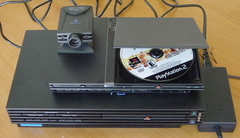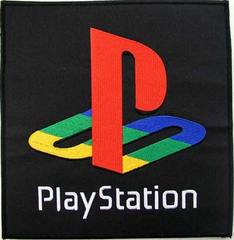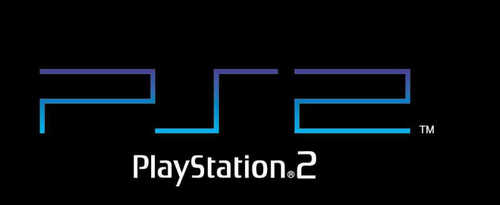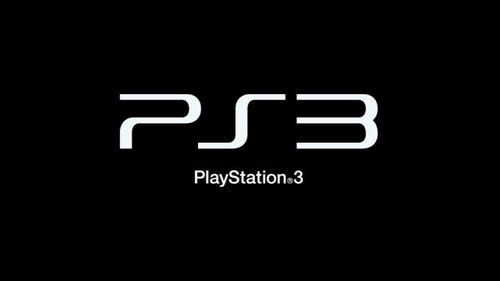Sony Computer Entertainment
Live in your world, Play in Ours.
Sony Playstation
Central processing unit
R3051
MIPS R3000A-compatible 32-bit RISC chip running at 33.8688 MHz
The chip is manufactured by LSI Logic Corp. with technology licensed from SGI.
Features:
Operating performance of 30 MIPS
Bus bandwidth 132 MB/s
4 kB Instruction Cache
1 kB non-associative SRAM Data Cache
2 MB of main RAM
Geometry transformation engine
Resides inside the main CPU chip, giving it additional vector math instructions used for 3D graphics
Features:
Operating performance of 66 MIPS
360,000 flat-shaded polygons per second
180,000 texture mapped and light-sourced polygons per second
Data decompression engine
Also residing within the main CPU, it is responsible for decompressing images and video.
Documented device mode is to read three RLE-encoded 16×16 macroblocks, run IDCT and assemble a single 16×16 RGB macroblock.
Output data may be transferred directly to GPU via DMA.
It is possible to overwrite IDCT matrix and some additional parameters, however MDEC internal instruction set was never documented.
Features:
Compatible with MJPEG and H.261 files
Operating Performance of 80 MIPS
Directly connected to CPU Bus
Graphics processing unit
Name unknown
Handles 2D graphics processing separate from the main 3D engine on the CPU
Features:
Maximum of 16.7 million colors (24-bit color depth)
Resolutions from 256 × 224 to 640 × 480
Adjustable frame buffer
Unlimited color lookup tables
Emulation of simultaneous backgrounds (for parallax scrolling)
Flat or Gouraud shading and texture mapping
1 MB of VRAM
Sound processing unit
Name unknown
Supports ADPCM sources with up to 24 channels
Sampling rate of up to 44.1 kHz
512 kB of memory
CD-ROM drive
2x, with a maximum data throughput of 300 kB/s
XA Mode 2 Compliant
CD-DA (CD-Digital Audio)
32 kB buffer
Bios
Stored on 512 kB ROM
Memory Card
128 kB of space in an EEPROM
Sony Playstation 3
CPU: Cell Processor
PowerPC-base Core @3.2GHz
1 VMX vector unit per core
512KB L2 cache
7 x SPE @3.2GHz
7 x 128b 128 SIMD GPRs
7 x 256KB SRAM for SPE
* 1 of 8 SPEs reserved for redundancy total floating point performance: 218 GFLOPS
GPU: RSX @550MHz
1.8 TFLOPS floating point performance
Full HD (up to 1080p) x 2 channels
Multi-way programmable parallel floating point shader pipelines
Sound: Dolby 5.1ch, DTS, LPCM, etc. (Cell-base processing)
Memory:
256MB XDR Main RAM @3.2GHz
256MB GDDR3 VRAM @700MHz
System Bandwidth:
Main RAM: 25.6GB/s
VRAM: 22.4GB/s
RSX: 20GB/s (write) + 15GB/s (read)
SB: 2.5GB/s (write) + 2.5GB/s (read)
System Floating Point Performance: 2 TFLOPS
Storage:
HDD
Detachable 2.5” HDD slot x 1
I/O:
USB: Front x 4, Rear x 2 (USB2.0)
Memory Stick: standard/Duo, PRO x 1
SD: standard/mini x 1
CompactFlash: (Type I, II) x 1
Communication: Ethernet (10BASE-T, 100BASE-TX, 1000BASE-T) x3 (input x 1 + output x 2)
Wi-Fi: IEEE 802.11 b/g
Bluetooth: Bluetooth 2.0 (EDR)
Controller:
Bluetooth (up to 7)
USB2.0 (wired)
Wi-Fi (PSP®)
Network (over IP)
AV Output:
Screen size: 480i, 480p, 720p, 1080i, 1080p
HDMI: HDMI out x 2
Analog: AV MULTI OUT x 1
Digital audio: DIGITAL OUT (OPTICAL) x 1
CD Disc media (read only):
PlayStation CD-ROM
PlayStation 2 CD-ROM
CD-DA (ROM), CD-R, CD-RW
SACD Hybrid (CD layer), SACD HD
DualDisc (audio side), DualDisc (DVD side)
DVD Disc media (read only):
PlayStation 2 DVD-ROM
PLAYSTATION 3 DVD-ROM
DVD-Video: DVD-ROM, DVD-R, DVD-RW, DVD+R, DVD+RW
Blu-ray Disc media (read only):
PLAYSTATION 3 BD-ROM
BD-Video: BD-ROM, BD-R, BD-RE
Sony Playstation 2
CPU: 64-bit[3][4] "Emotion Engine" clocked at 294.912 MHz (299 MHz on newer versions), 10.5 million transistors
System memory: 32 MB Direct Rambus or RDRAM
Memory bus Bandwidth: 3.2 gigabytes per second
Main processor: MIPS R5900 CPU core, 64-bit, little endian (mipsel).
Coprocessor: FPU (Floating Point Multiply Accumulator × 1, Floating Point Divider × 1)
Vector Units: VU0 and VU1 (Floating Point Multiply Accumulator × 9, Floating Point Divider × 1), 32-bit, at 150 MHz.
VU0 typically used for polygon transformations optionally (under parallel or serial connection), physics and other gameplay based things
Parallel performs transformations in parallel in the same moment
Serial (series) performs transformations in a series of steps or stages coherent to the design of each VU
Stage 1: VU0 does perspective and cam, boning, animations and movement laws per triangle
Stage 2: VU1 does colors, lights and effects per triangle)
VU1 typically used for polygon transformations, lighting and other visual based calculations
Texture matrix able for 2 units (UV/ST)[45]
Floating Point Performance: 6.2 gigaFLOPS (single precision 32-bit floating point)
FPU 0.64 gigaFLOPS
VU0 2.44 gigaFLOPS
VU1 3.08 gigaFLOPS (with Internal 0.64 gigaFLOPS EFU)
3D CG Geometric transformation(VU0+VU1 parallel): 66 million polygons per second
3D CG Geometric transformations under curved surfaces: 16 million polygons per second
3D CG Geometric transformations at peak bones/movements/effects(textures)/lights(VU0+VU1): 15–20 million polygons per second (dependent on if series or parallel T&L)
Actual real-world polygons (per frame):500-650k at 30fps, 250-325k at 60fps
Compressed Image Decoder: MPEG-2
I/O Processor interconnection: Remote Procedure Call over a serial link, DMA controller for bulk transfer
Cache memory: Instruction: 16 KB, Data: 8 KB + 16 KB (ScrP)
Graphics processing unit: "Graphics Synthesizer" clocked at 147 MHz
Pixel pipelines: 16
Video output resolution: variable from 256x224 to 1280x1024 pixels
4 MB Embedded DRAM video memory bandwidth at 48 gigabytes per second (main system 32 MB can be dedicated into VRAM for off-screen materials)
Texture buffer bandwidth: 9.6 GB/s
Frame buffer bandwidth: 38.4 GB/s
DRAM Bus width: 2560-bit (composed of three independent buses: 1024-bit write, 1024-bit read, 512-bit read/write)
Pixel configuration: RGB: Alpha:Z Buffer (24:8, 15:1 for RGB, 16, 24, or 32-bit Z buffer)
Dedicated connection to: Main CPU and VU1
Overall pixel fillrate: 16x147 = 2.352 Gpixel/s (rounded to 2.4 Gpixel/s)
Pixel fillrate: with no texture, flat shaded 2.4(75,000,000 32pixel raster triangles)
Pixel fillrate: with 1 full texture(Diffuse Map), Gouraud shaded 1.2 (37,750,000 32-bit pixel raster triangles)
Pixel fillrate: with 2 full textures(Diffuse map + specular or alpha or other), Gouraud shaded 0.6 (18,750,000 32-bit pixel raster triangles)
GS effects: AAx2 (poly sorting required),[45] Bilinear, Trilinear, Multi-pass, Palletizing (4-bit = 6:1 ratio, 8-bit = 4:1)
Multi-pass rendering ability
Four passes = 300 Mpixel/s (300 Mpixels/s divided by 32 pixels = 9,375,000 triangles/s lost every four passes)
Audio: "SPU1+SPU2" (SPU1 is actually the CPU clocked at 8 MHz)
Sound Memory: 2 MB
Number of voices: 48 hardware channels of ADPCM on SPU2 plus software-mixed channels
Sampling Frequency: 44.1 kHz or 48 kHz (selectable)
Output: Dolby Digital 5.1 Surround sound, DTS (Full motion video only), later games achieved analog 5.1 surround during gameplay through Dolby Pro Logic II
I/O Processor:I/O Memory: 2 MB
CPU Core: Original PlayStation CPU (MIPS R3000A clocked at 33.8688 MHz or 37.5 MHz)
Automatically underclocked to 33.8688 MHz to achieve hardware backwards compatibility with original PlayStation format games.
Sub Bus: 32-bit
Connection to: SPU and CD/DVD controller.
Interfaces:
2 proprietary PlayStation controller ports (250 kHz clock for PS1 and 500 kHz for PS2 controllers)
2 proprietary Memory Card slots using MagicGate encryption (250 kHz for PS1 cards, up to 2 MHz for PS2 cards)
Expansion Bay (PCMCIA on early models for PCMCIA Network Adaptor and External Hard Disk Drive) DEV9 port for Network Adaptor
Modem, Ethernet and Internal Hard Disk Drive (single IDE/ATA channel, possible to hook 2 devices to.)
FireWire (only in SCPH 10xxx – 3xxxx)
Infrared remote control port (SCPH 5000x and newer) — IEEE 1394 port removed and Infrared port added in SCPH-50000 and later hardware
versions.
2 USB 1.1 ports with an OHCI-compatible controller.
Disc Drive type: proprietary interface through a custom micro-controller + DSP chip. 24x speed (PlayStation 2 format CD-ROM, PlayStation format CD-ROM), 4x (Supported DVD formats) — Region-locked with anti-copy protection. Can't read Gold Discs.
Supported Disc Media: PlayStation 2 format CD-ROM, PlayStation format CD-ROM, Compact Disc Audio, PlayStation 2 format DVD-ROM (4.7 GB)(some games on DVD9 8.5 GB), DVD Video (4.7 GB), DVD-9 (8.5 GB Double-Layer). Later models (starting with SCPH-50000) are DVD+RW, and DVD-RW compatible.
